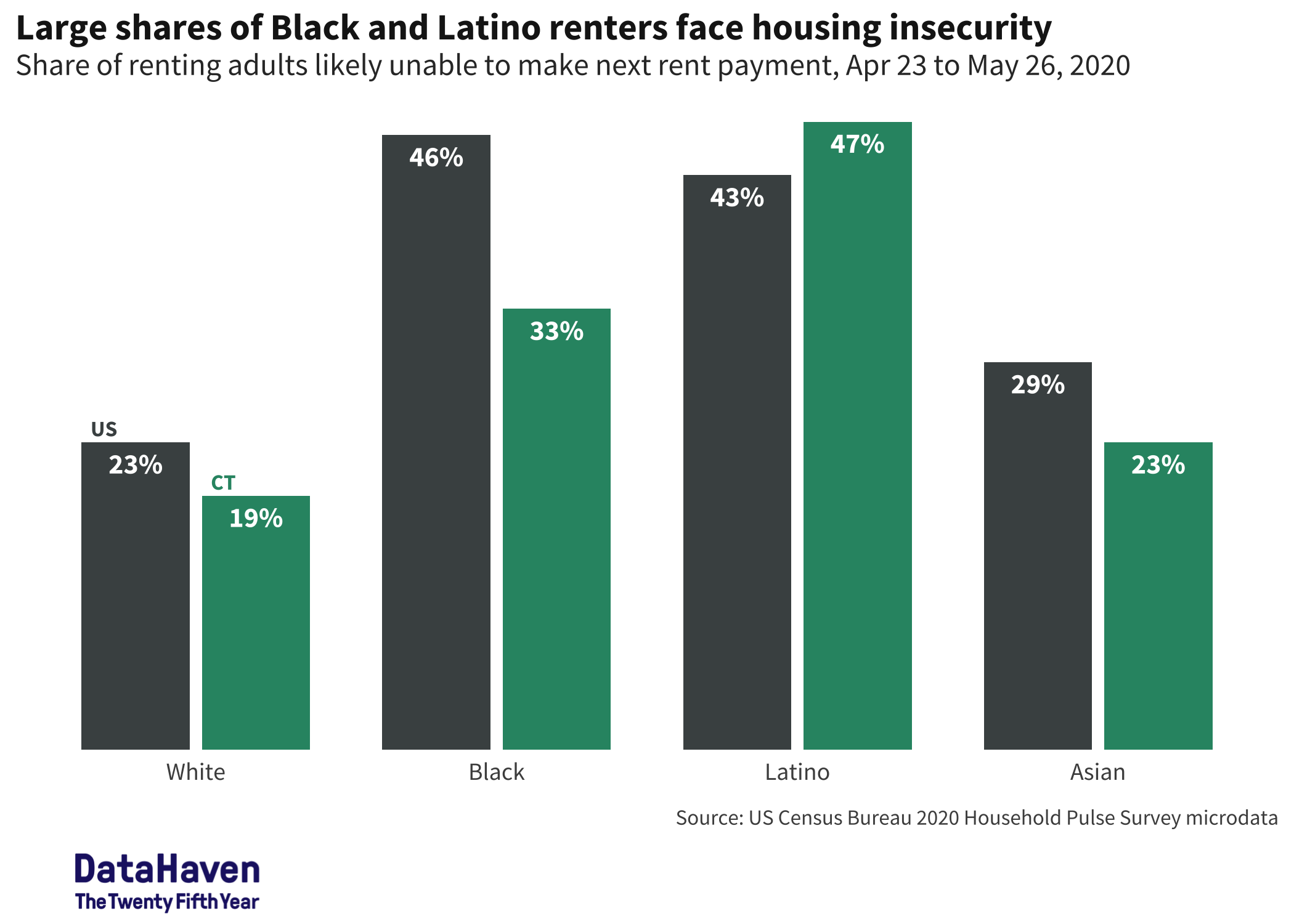The fight for a more equal Connecticut begins at home: Re-imagining pandemic housing policy
CT Mirror Viewpoints July 3, 2020
by Numi Katz On June 29, amidst pandemic-induced unemployment and economic uncertainty, the Gov. Ned Lamont’s administration released a sweeping $33 million assistance program for renters, homeowners, and local landlords. Connecticut has been lauded as a national leader in the housing policy response to the COVID-19 pandemic.… Read More
New data and resident stories inform Connecticut’s road map for recovery
by Mark Abraham June 26, 2020
[Note: This piece, by DataHaven's Mark Abraham and Aparna Nathan, initially appeared in the Connecticut Mirror.]… Read More
Coronavirus more deadly for Blacks and Hispanics, exposes inequity
Connecticut Post June 26, 2020
[Excerpt from feature article by Bill Cummings, June 26, 2020, featuring data from the new DataHaven publication "Towards Health Equity in Connecticut: The Role of Social Inequality and the Impact of COVID-19"] The coronavirus has been far more deadly for Connecticut’s Black and Hispanic residents than white citizens — and the reasons are exposing decades of economic and health disparity.… Read More
Study: Coronavirus further exposes racial disparities in CT
Hearst Connecticut June 23, 2020
[Excerpt from feature article by Justin Papp, June 24, 2020] A new report by New Haven-based DataHaven highlights issues of inequity in the state as they relate to the COVID-19 pandemic. The report, titled “Towards Health Equity in Connecticut,” was released this month and includes information on the coronavirus effect on a variety of populations and based on a series of factors that impact health outcomes.… Read More
Editorial: Need for jobless benefits has not ended
New Haven Register June 19, 2020
[Excerpt from Hearst Connecticut Media Editorial Board masthead, June 19, 2020] [....] Federal estimates show the unemployment rate, which skyrocketed at the start of the pandemic, will remain high at least through the end of the year. Thousands of people in Connecticut will remain in need of serious help to make ends meet, and that is not likely to change in the near term.… Read More
For immediate release -- June 18, 2020 For media: Download this media advisory and an Executive Summary as a PDF: … Read More





